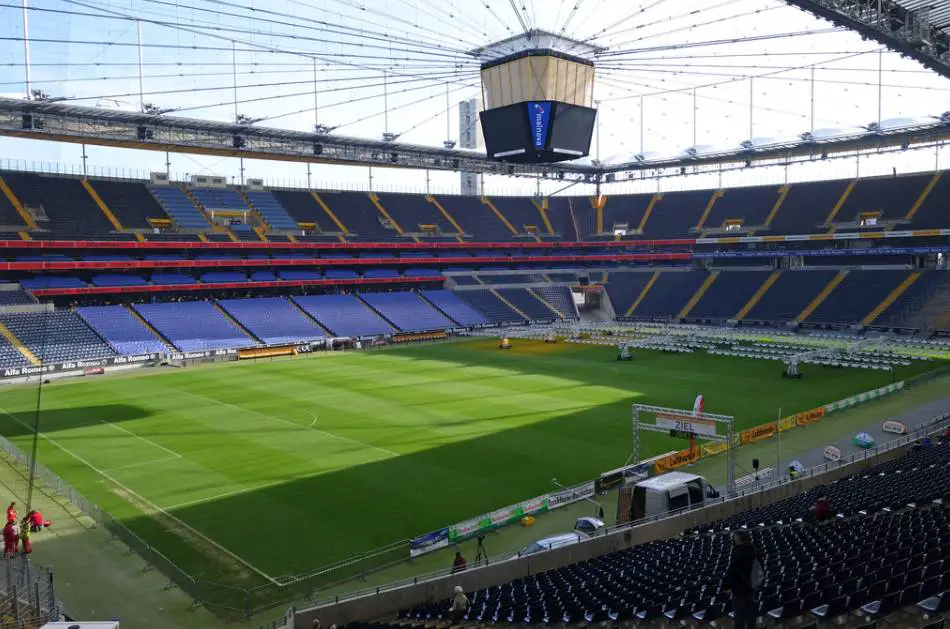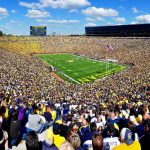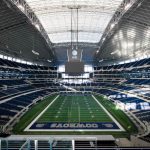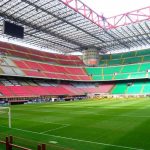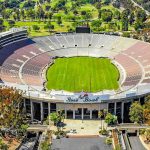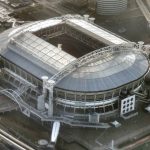The Bundesliga is the name of the top flight of football (or soccer in 9 countries) in Germany.
It’s not only renowned for its high-quality matches, but also because it boasts the highest average attendance in Europe.
Well over 43,000 people visit some of the most awesome stadiums in Europe. The country is home to some of the best-supported football clubs on the planet such as Bayern Munich and Dortmund.
Let’s take a closer look at some of the biggest stadiums in Germany, a list that features some of the biggest arenas in the world.
1. Westfalenstadion
- Location: Dortmund, North Rhine-Westphalia
- Capacity: 81,365
The Westfalenstadion is officially known as the Signal Iduna Park and is the home of one of Germany’s most popular football clubs, Borussia Dortmund. It’s by far the biggest stadium in Germany in terms of capacity and the only stadium in the country that can hold over 80,000 spectators.
One of the most amazing features of the stadium is the immense Südtribüne (southern stand), the largest terrace in European football for standing supporters. This terrace alone can hold 24,454 fans and is commonly referred to as the “Yellow Wall” during games.
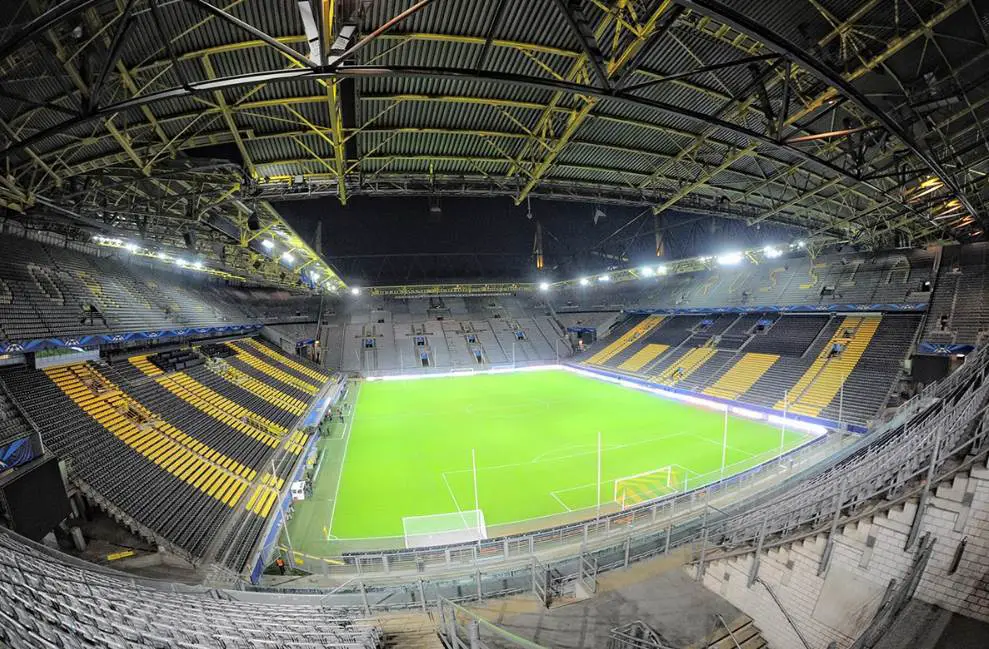
2. Allianz Arena
- Location: Munich, Bavaria
- Capacity: 75,024
The Allianz Arena is the home of one of the biggest and most successful football clubs in the world, Bayern Munich. The stadium was constructed between 2002 and 2005 and was originally shared by both Bayern and 1860 Munich, the other major football club in the city. Bayern has since bought the 50% share and now solely owns the stadium.
It’s one of the stadiums in Germany that is sold out at every single game of the season, quite a remarkable achievement. Because of the enormous fanbase of Bayern Munich, the stadium was expanded. The exterior of the stadium is just as impressive as the interior as it was the world’s first stadium that could change its color scheme.
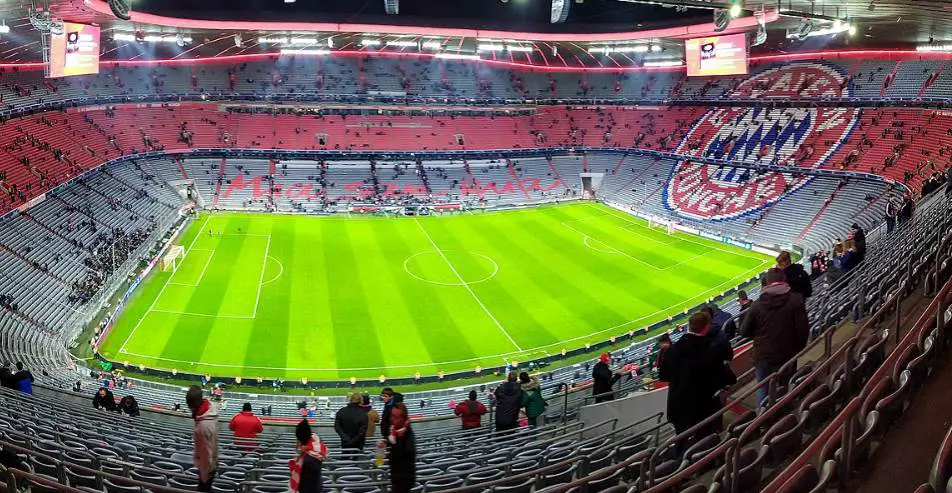
3. Olympiastadion Berlin
- Location: Berlin
- Capacity: 74,475
The Olympiastadion in Berlin is the centerpiece of the Olympiapark in the western part of the city. As the name of the stadium suggests, it was constructed specially for the controversial Summer Olympics of 1936. Multiple other sports venues can be found inside this large park that has a history as a horserace track that was constructed here in the 19th century.
The stadium was severely outdated in the early 21st century and was completely renovated to serve as the main venue of the FIFA World Cup of 2006. Since 1963, it has been the home venue of German football club Hertha BSC and has hosted several important matches including the yearly DFB-Pokal final and the 2015 Champions League final.
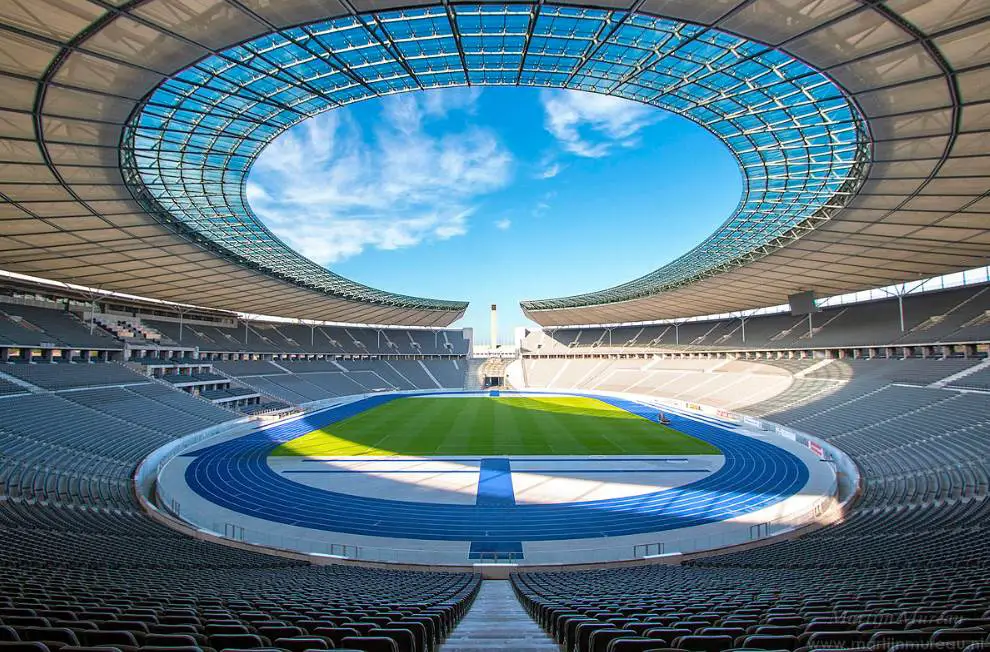
4. Olympiastadion Munich
- Location: Munich Bavaria
- Capacity: 69,250
The Olympiastadion in Munich was constructed for the same purpose as its namesake in Berlin as it served as the main venue of the 1972 Summer Olympics. It’s the centerpiece of the Olympiapark München in the northern part of the city. It was the former home venue of Bayern Munich until they moved to the Allianz Arena.
It was also the home of 1860 Munich during this period. This club now occupies its former home at the Stadion an der Grünwalder Straße after relegating from the Bundesliga. Since 2020, the Olympiastadion has been the home of Munich-based football club Türkgücü München. This club was promoted to the 3. Liga in 2020.
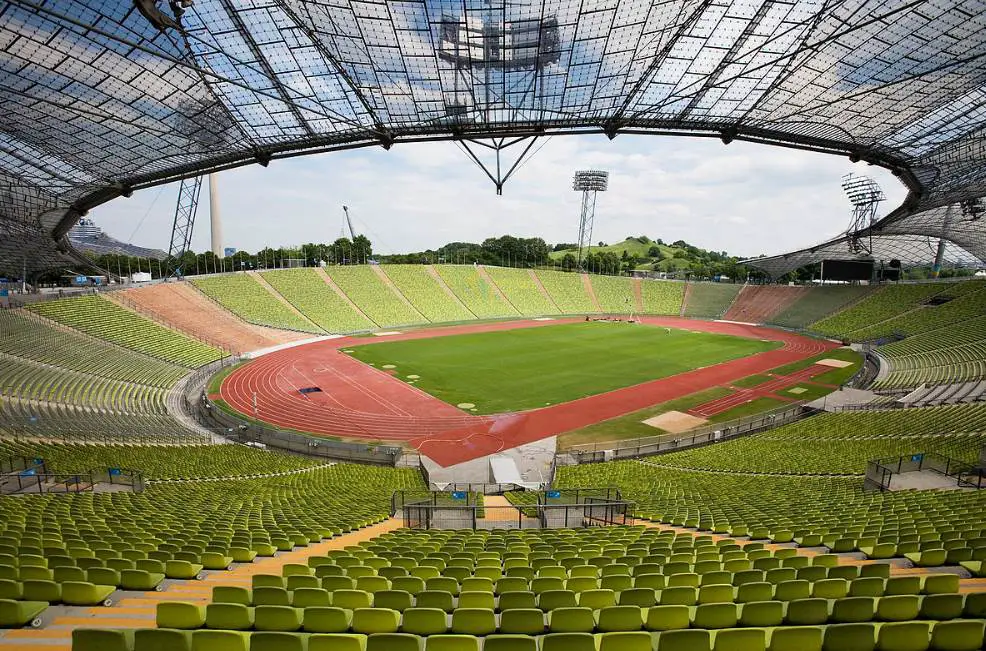
5. Arena AufSchalke
- Location: Gelsenkirchen, North Rhine-Westphalia
- Capacity: 62,271
The Arena AufSchalke is currently known as the Veltins-Arena and was constructed between 1998 and 2001. It was one of the first stadiums in Europe to feature both a retractable roof and a retractable pitch.
It has been the home of Bundesliga club FC Schalke 04 ever since. They were able to move out of their outdated Parkstadion at that time. The stadium was also a prominent venue during the 2006 FIFA World Cup and hosted the Quarter Final between England and Portugal.
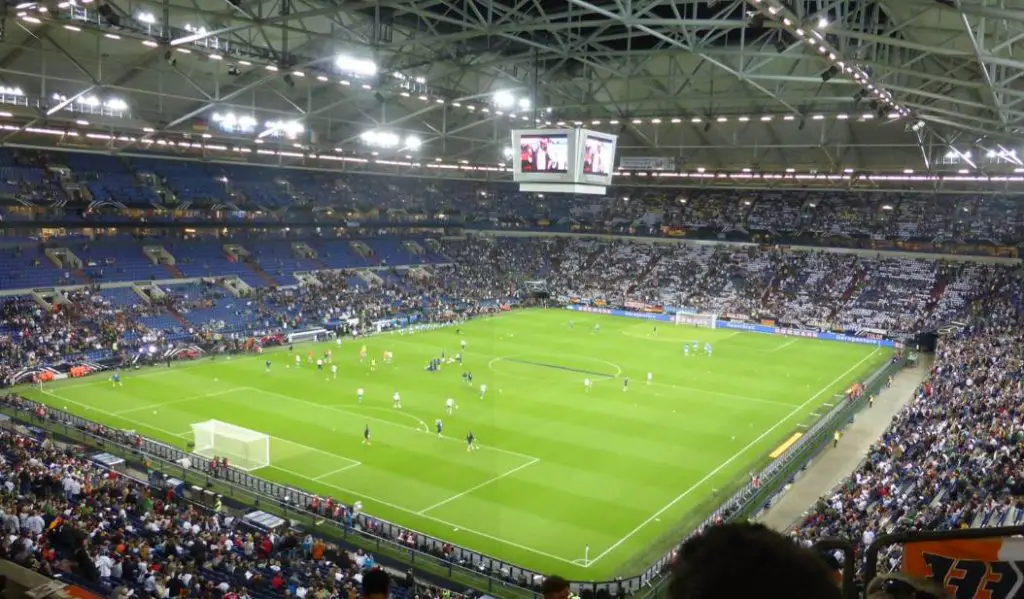
6. Mercedes-Benz Arena
- Location: Stuttgart, Baden-Württemberg
- Capacity: 60,441
The Mercedes-Benz Arena is a stadium in the German city of Stuttgart and was known as the Neckarstadium until 1993. This was a reference to the nearby Neckar River. It was known as the Gottlieb-Daimler-Stadion between 1993 and 2008 and was renamed once more after a major reconstruction phase.
The stadium is home to the Bundesliga club VfB Stuttgart. It’s one of the few stadiums in the world that feature a fabric roof construction that consists of panels of PVC-coated polyester. This roof has already been present at this enormous stadium since 1993
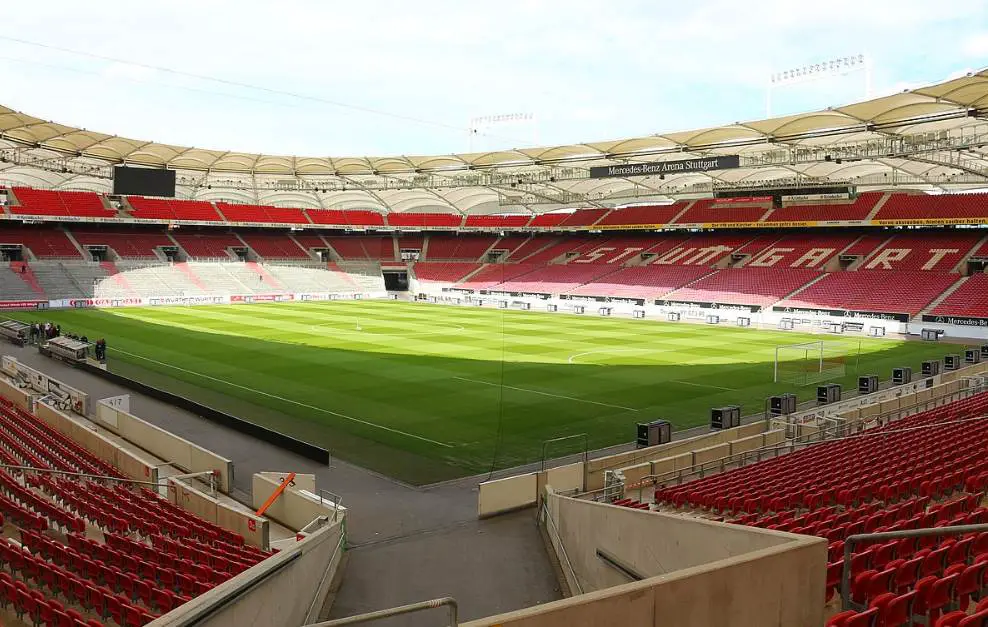
7. Volksparkstadion
- Location: Hamburg
- Capacity: 57,030
The Volksparkstadion was originally constructed in the early 1950s and is currently the home venue of Bundesliga club Hamburger SV. This makes it all the more remarkable that the stadium wasn’t used by this club until 1963, the year that they qualified for the modified Bundesliga.
The stadium was originally constructed for FC Altona, a club now known as Altona 93 which has seriously dropped to Germany’s Regionalliga. The old stadium was replaced by the modern football temple we see today between 1998 and 2000.
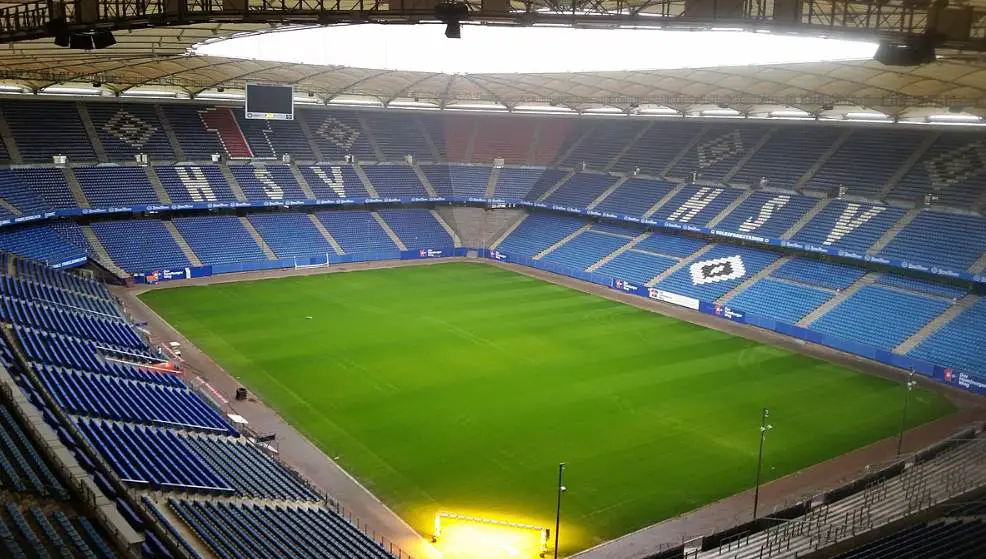
8. Merkur Spielarena
- Location: Düsseldorf, North Rhine-Westphalia
- Capacity: 54,600
The Merkur Spielarena is the current name of a stadium that was originally known as the Esprit Arena and the LTU Arena. It’s also sometimes referred to as the Düsseldorf Arena and is the home venue of the German football club Fortuna Düsseldorf.
The stadium features a retractable roof and has a special heating system that allows the stadium to be used for all sorts of events during the cold winter months. This means that you can enjoy a concert when it’s freezing outside, pretty amazing.
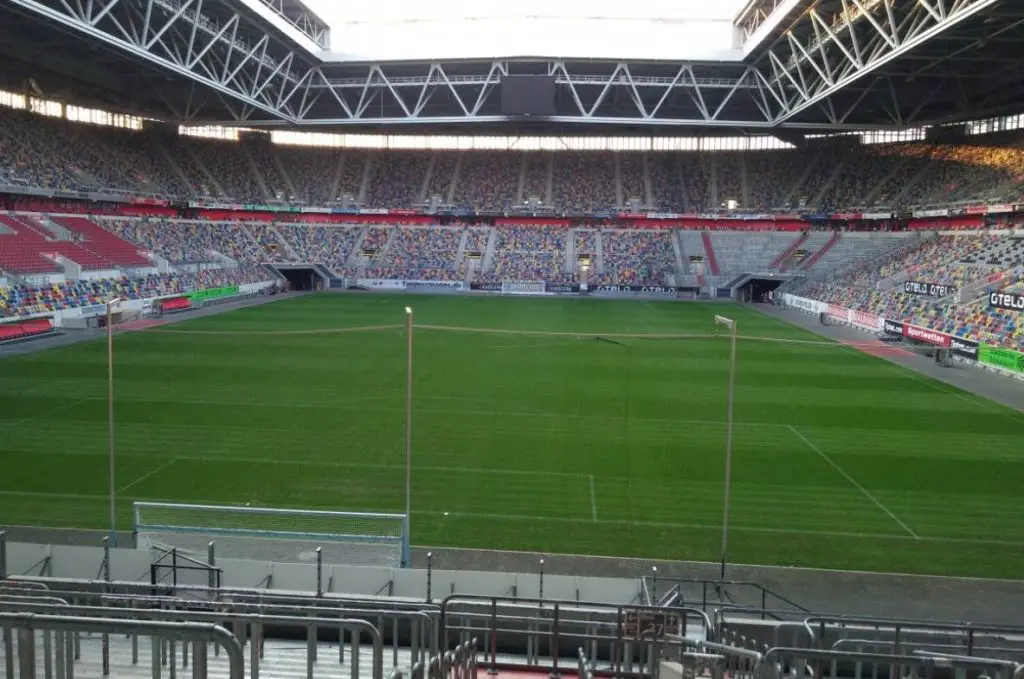
9. Borussia-Park
- Location: Mönchengladbach, North Rhine-Westphalia
- Capacity: 54,057
The Borussia-Park is the home venue of the football club Borussia Mönchengladbach. The cub moved into this huge football stadium in 2004 which replaced the outdated Bökelbergstadion, a stadium that could hold 34,500 spectators. This stadium was transformed into a residential area shortly after and the main stands have been incorporated into the neighborhood.
Of the 54,057 places inside the Borussia-Park, 16,145 are standing places. These are still allowed during league games but for international matches, the stadium’s capacity has to be reduced to just 46,249 seats. It was the biggest stadium in Germany not to host any games during the 2006 FIFA World Cup.
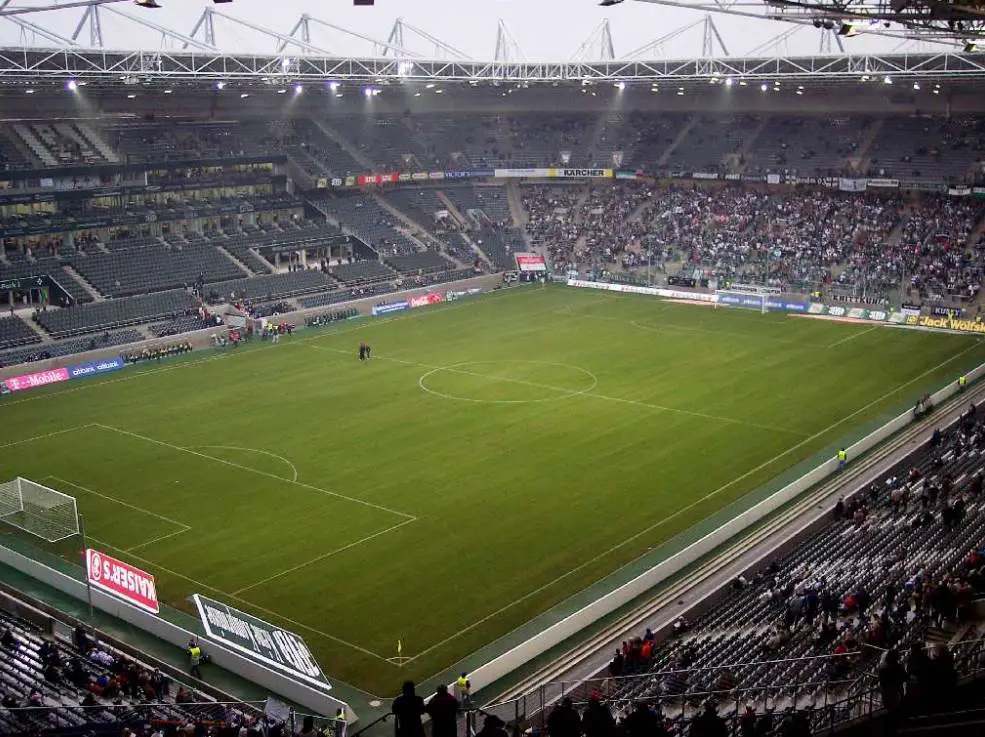
10. Waldstadion
- Location: Frankfurt, Hesse
- Capacity: 51,500
The Waldstadion is officially known as the Deutsche Bank Park and was formerly named the Commerzbank-Arena. The stadium was originally opened in the year 1925 and has been the home venue of the German football club Eintracht Frankfurt ever since.
The stadium was renovated and expanded several times throughout its history. These included projects to get the stadium ready for the 1974 FIFA World Cup and the 2006 FIFA World Cup. The final project was completed in 2005 and it has become a multi-purpose arena.
